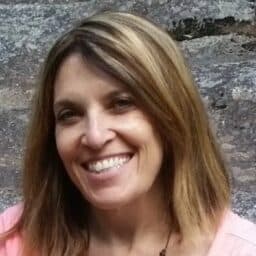How to choose the right sandbox for your project

What are sandboxes?
Sandboxes are isolated software testing environments that simulate a production environment but are separate from it. They provide a safe space for developers, testers, and IT professionals to experiment, develop, and test new code, applications, integrations, and changes.
By creating a sandbox, you ensure that nothing done within it can impact live data or systems. This makes sandboxes a critical component of any software development lifecycle.
Why use Salesforce Sandboxes?
Millions of people around the world rely on Salesforce for sales, customer service, marketing automation, and more. Hundreds of thousands of developers and administrators create and customize the Salesforce applications that these people use.
Imagine the chaos that could ensue – and the customers and revenue that could be lost – if these developers experimented on live environments.
Salesforce Sandboxes eliminate this from happening.
Top 6 benefits of Salesforce Sandboxes
- Risk Mitigation
By testing in an isolated environment, sandboxes minimize the risk of introducing errors or disruptions to the main system. - Innovation and Development
Developers and administrators can freely innovate and test new ideas without worrying about breaking existing functionalities. - Training Users
Salesforce Sandboxes are excellent training grounds for new users. You can also use them for testing new operational procedures without the risk of altering or damaging real data or workflows. - User Acceptance Testing (UAT)
Sandboxes provide a realistic environment for training users and conducting UAT. This results in higher user adoption rates and smoother rollouts of new features. - Change Management
Teams can prepare and test configuration and other changes thoroughly before going live. - Agility
By collaborating in this isolated environment, developer teams can speed up prototyping and feedback cycles.
Maximize Your Salesforce Development with GRAX Sandbox Seeding
Unlock the full potential of your Salesforce development and testing environments with GRAX Sandbox Seeding.
Types of Salesforce Sandboxes
Salesforce offers four types of sandboxes. Each is suited to a different phase of the development and testing lifecycle.
- Salesforce Developer Sandbox
Ideal for individual developers or small teams working on early-stage development and testing. These sandboxes are lightweight. They can be refreshed once a day, and have a data and file storage limit of 200MB each.
Developer sandboxes offer a limited copy of the production environment. They’re well-suited for code and configuration changes.
- Salesforce Developer Pro Sandbox
Suited for more extensive testing and development activities that require a larger sample of production data. They provide 1GB for both data storage and file storage. The refresh limit is one day.
This type of sandbox is perfect for performance testing, larger teams, and more comprehensive development tasks.
- Salesforce Partial Copy Sandbox
A mid-tier option that includes a subset of the production environment’s data. The Partial Copy Sandbox has a refresh interval of five days and data storage up to 5GB. File storage is the same as your production org.
This sandbox is excellent for staging, UAT, and training. It provides more realistic testing scenarios without the need for a full data copy.
- Salesforce Full Copy Sandbox
This is a complete replica of the production environment, including all data and metadata. Full Sandboxes have a 29-day refresh interval. They mirror the storage limits of your production org for data and file storage.
Use full sandboxes for final testing before deployment and load testing. This will ensure that new features and updates will work exactly as expected in the live environment.
Seeding for Sandbox Testing
Seeding is the process of populating a sandbox environment with a specific subset of data from the production environment. The practice is crucial for creating realistic testing and development scenarios that closely mimic actual operations. Seeding allows you to:
- Test features with realistic data sets.
- Ensure integrations work correctly with actual data structures and volumes.
- Validate application performance under realistic data conditions.
Accelerate Innovation with GRAX Sandbox Seeding
Streamline your workflow, safeguard your data, and foster innovation without compromising on speed or security.
How GRAX makes Salesforce Sandboxes more effective and efficient
GRAX Sandbox Seeding makes it easy to populate/restore data from any point in your Salesforce history to an org in Salesforce. It helps you innovate faster without fear by quickly seeding Salesforce data for testing and development.
Where to use GRAX Sandbox Seeding
GRAX Sandbox Seeding works with all Salesforce org types. It is particularly useful for improving the experience with Developer and Developer Pro sandboxes. This is because Salesforce doesn’t provide the tooling to propagate data as part of a Sandbox template-driven refresh.
With GRAX seeding, you can:
- Support complete data hierarchy of Salesforce data, files, attachments, chatter, and more
- Seed data anywhere, including into any Developer, Developer Pro, Partial, Full Sandboxes, production or scratch orgs
- Anonymize sensitive and personally identifiable information (PII) data so you don’t risk exposure
- Reuse seeding templates to replicate seeding data structures quickly
By effectively using Salesforce Sandboxes and seeding tools, you can accelerate your Salesforce development cycles while maintaining high standards of quality and reliability.
Try sandbox seeding for free
Take GRAX for a test drive and accelerate your Salesforce development cycles.





